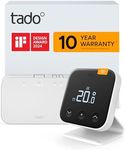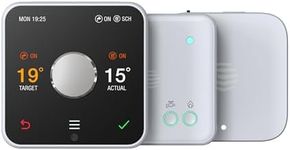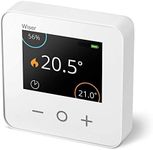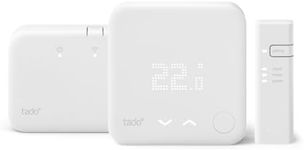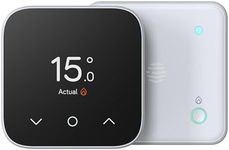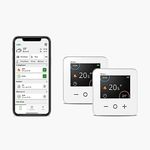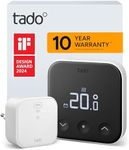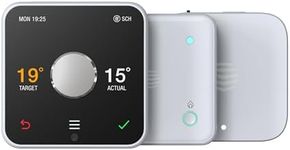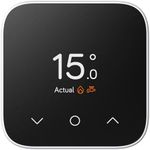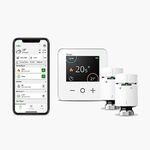Buying Guide for the Best Thermostats
Choosing the right thermostat for your home can significantly impact your comfort and energy efficiency. A thermostat regulates the temperature of your home by controlling your heating and cooling systems. When selecting a thermostat, it's important to consider your specific needs, the compatibility with your HVAC system, and the features that will provide the most convenience and efficiency for your lifestyle.CompatibilityCompatibility refers to whether the thermostat can work with your existing heating and cooling system. This is crucial because not all thermostats are compatible with all HVAC systems. There are different types of systems such as single-stage, multi-stage, heat pump, and others. To determine compatibility, check your current system's specifications and compare them with the thermostat's compatibility list. If you have a complex system, you may need a more advanced thermostat.
ProgrammabilityProgrammability is the ability to set a schedule for your thermostat to follow. This feature is important because it allows you to automatically adjust the temperature based on your daily routine, which can lead to energy savings. Programmable thermostats can be divided into basic models with simple daily schedules and more advanced models with multiple settings for different days of the week. If you have a regular routine, a basic programmable thermostat may suffice. For more varied schedules, consider a more advanced model.
Smart FeaturesSmart features include connectivity to Wi-Fi, integration with smart home systems, and the ability to control the thermostat remotely via a smartphone app. These features are important for convenience and energy management. Smart thermostats can learn your habits over time and adjust settings automatically for optimal comfort and efficiency. If you value convenience and want to maximize energy savings, a smart thermostat with these features would be beneficial.
User InterfaceThe user interface is how you interact with the thermostat, including the display and controls. This is important because a user-friendly interface makes it easier to adjust settings and program schedules. Interfaces can range from simple digital displays with basic buttons to touchscreens with advanced graphics. If you prefer simplicity, a basic interface may be sufficient. For those who enjoy technology and want more control, a touchscreen interface might be more appealing.
Energy EfficiencyEnergy efficiency refers to the thermostat's ability to help reduce energy consumption. This is important for lowering utility bills and reducing your environmental footprint. Look for thermostats with energy-saving features such as adaptive learning, geofencing, and detailed energy reports. If energy savings are a priority for you, choose a thermostat with these advanced features.
InstallationInstallation involves the process of setting up the thermostat in your home. This is important because some thermostats are easier to install than others. Basic models may only require simple wiring, while more advanced models might need professional installation. If you are comfortable with DIY projects, you might opt for a model with straightforward installation. Otherwise, consider a model that offers professional installation services.
